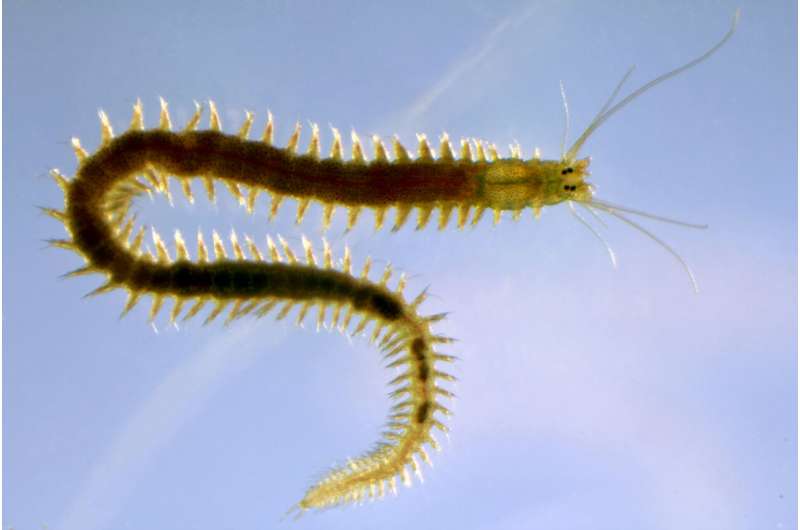
The sea worm Platynereis dumerilii is only a few centimeters long, but has a remarkable ability: In just a few days, it can regenerate entire parts of its body after an injury or amputation. By focusing more specifically on the mechanisms at play in the regeneration of this worm’s tail, a research team led by a CNRS scientist has observed that gut cells play a role in the regeneration of the intestine as well as other tissues such as muscle and epidermis.
Even more surprising, the team found that this ability of gut cells to regenerate other tissue varies according to their location: The closer they are to the posterior end of the worm, the greater the variety of cell types they can rebuild. This study appears in the journal Development.
Scientists carried out these observations by monitoring the outcome of gut cells and proliferative cells that form close to the amputated end of the worm. This was tracked using different markers, in particular by fluorescent beads ingested by the worms. Annelids, (segmented worms), which have only been studied in the last 20 years, are an ideal model for the study of regeneration, a process that is widespread in animals but still mysterious for scientists.
The research team will continue this work to determine whether cell types, other than gut cells, can play a role in regenerating a variety of cell types.
More information:
Variations in cell plasticity and proliferation underlie distinct modes of regeneration along the antero-posterior axis in the annelid Platynereis., Development (2024). DOI: 10.1242/dev.202452
Citation:
Study reveals gut cells’ role in marine worm regeneration (2024, July 2)
retrieved 2 July 2024
from https://phys.org/news/2024-07-reveals-gut-cells-role-marine.html
This document is subject to copyright. Apart from any fair dealing for the purpose of private study or research, no
part may be reproduced without the written permission. The content is provided for information purposes only.




